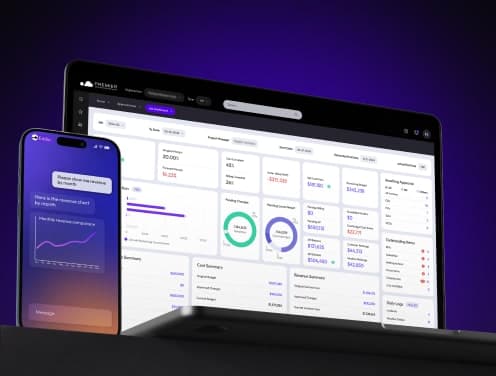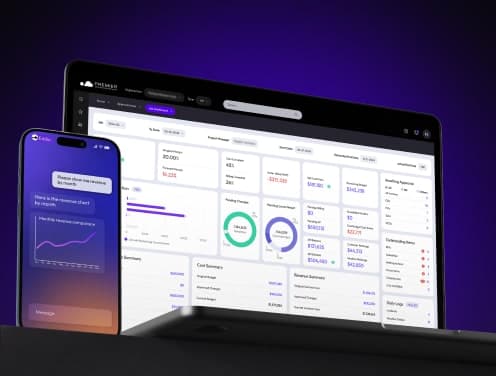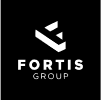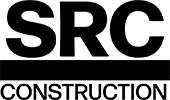
IoT in Construction Management: Top Tools and Benefits
Construction sites produce 600 million tons of waste annually. The construction industry accounts for more than one in five workplace deaths. These alarming numbers show why modern builders and developers need IoT in their project management.
The construction industry's IoT market stands at $12.3 billion today. Experts predict this figure will climb to $26.5 billion by 2027. This growth makes sense since 76% of construction businesses now include technology in their strategic plans.
Smart technology has changed how construction sites operate through live monitoring and informed decisions. Construction teams rely on IoT sensors that track concrete curing and worker safety. These innovative tools also help manage equipment better. Teams can prevent accidents, cut down on waste, and increase efficiency while following regulations.
IoT Implementation Framework for Construction
Construction businesses need a well-laid-out approach to implement IoT successfully. A recent industry survey reveals that 32% of construction businesses use IoT solutions to track resources and monitor safety.
Assessment and Planning Phase
The first phase begins when companies define their project needs and goals. Construction companies should spot areas where IoT can make the biggest impact. Project leaders need to create a detailed roadmap that has:
- Timeline development
- Role assignments
- Budget allocation
- Performance metrics
- Risk assessment protocols
Hardware Selection and Setup
The right hardware choice creates the foundation of any IoT system. Projects need specific components based on their scope:
- Edge devices for data collection
- Gateway devices for data preprocessing
- Central processing systems
- Security elements
- Power management solutions
Construction firms should pick hardware that matches their connection needs. LPWAN options can cover several kilometers, which makes them perfect for big construction sites.
Software Integration Strategy
Software integration connects the entire IoT ecosystem. Industry data shows that construction firms using IoT-driven systems can reduce labor costs by up to 14.2%.
The process starts when companies pick the right data collection setup. Premier Construction Software shows this by offering smooth integration with IoT devices to monitor projects and manage resources in real time.
Data analytics platforms turn IoT device information into clear visuals. These platforms should have:
- Custom workflows for specific construction processes
- Automated reporting systems
- Real-time monitoring dashboards
- Predictive maintenance algorithms
Security measures play a key role in software integration. Companies must protect their IoT data with strong cybersecurity. The system should also follow data privacy rules and industry standards.
Essential IoT ToolsEssential IoT Tools in Construction Management
Modern construction sites use sophisticated IoT tools to streamline processes and enhance safety. Ground case studies reveal that predictive maintenance using equipment sensor data reduces downtime incidents by 25–30% and boosts asset utilization by 10–15%.
Live Monitoring Systems
Construction IoT monitoring systems create digital maps of construction sites through sensor networks. These systems keep track of several key factors:
- Environmental conditions
- Equipment performance
- Worker locations
- Material movement
- Site security
IoT-connected surveillance cameras and measurement sensors enable remote machinery control and increase operational accuracy. Premier Construction Software combines with these monitoring systems to give you the complete project oversight and resource allocation.
Asset Tracking Solutions
Asset tracking technology stops equipment losses and makes resource usage better. IoT trackers and RFID tags monitor equipment's location and usage patterns live. This organized method helps construction teams:
- Reduce equipment search time
- Prevent unauthorized use
- Schedule maintenance effectively
- Monitor fuel consumption
- Optimize equipment deployment
Companies that use IoT tracking systems see a 10-15% improvement in asset utilization. Construction managers get instant alerts when equipment moves without authorization.
Safety Management Platforms
Safety platforms use wearable devices to protect workers. Smart helmets and connected work boots track vital signs and environmental conditions. These systems have shown remarkable results - sites using IoT safety monitoring report a 40% reduction in accidents and injuries.
Environmental sensing and analysis has led to a 15% drop in work-related illnesses. Safety platforms detect these issues automatically:
- Dangerous gas levels
- Excessive noise exposure
- Fall hazards
- Worker fatigue
- Unauthorized zone access
IoT sensors placed around job sites create live hazard maps that highlight danger zones and track employee numbers in specific areas. Project management systems receive this data directly and enable quick responses to safety concerns.
Data Management and Analytics
Data analytics is the foundation of IoT implementation in construction projects. AWS IoT Analytics processes massive volumes of construction data and filters out corrupted messages or false readings.
Data Collection Infrastructure
Construction sites use multiple data collection points through connected IoT devices. Smart wearables, surveillance cameras, and material tags capture immediate information about site conditions and progress. Cloud-based platforms process this information and create a continuous loop of practical findings.
Premier Construction Software optimizes this process by automating data collection from IoT sources of all types. The platform processes information from equipment sensors, environmental monitors, and safety devices to create a unified data repository.
Analytics Tools and Dashboards
Modern IoT dashboards show construction data through interactive visualizations. Key features include:
- Immediate data monitoring with instant alerts
- Interactive diagrams for performance tracking
- Status indicators for equipment and safety
- Customizable KPI displays
- Predictive maintenance findings
Construction firms that use these analytics tools have seen a 29% reduction in operational costs. The dashboards monitor hazards through temperature, humidity, and gas sensors.
Integration with Premier Construction Software
Premier Construction Software combines IoT data with enterprise resource planning (ERP) systems. This integration brings several advantages:
- Automated field-to-office financial workflows
- Immediate job cost analysis
- Accurate portfolio-wide forecasting
- Shared financial planning
- Better profit margin protection
The software turns IoT device information into operational insights. The platform also lets companies upload documents, contracts, drawings, and compliance records into a secure system.
Construction teams monitor project performance through custom workflows in the platform. The system creates accountability layers that other construction software programs can't match. This integration reduces equipment downtime and lets construction firms grow their project portfolio without extra costs.
The analytics platform uses machine learning algorithms to analyze construction patterns. The system then suggests better construction activity sequences, material specifications, and site layouts. This informed approach leads to less waste through optimized resource allocation and improved efficiency.
Security and Compliance Protocols
Data protection for IoT systems remains the most important priority in construction project management. Studies show that cybercrime costs are expected to reach $10.50 trillion annually by 2025. This staggering figure emphasizes why construction firms need strict security protocols.
Data Protection Standards
Construction IoT systems need end-to-end encryption to ensure data security. Premier Construction Software uses Advanced Encryption Standard (AES) and Transport Layer Security (TLS) protocols to protect sensitive project information. The protected data includes:
- Project blueprints and specifications
- Financial transactions and records
- Employee and contractor information
- Equipment tracking data
- Site surveillance footage
Access Control Systems
IoT devices create multiple security layers through access control at construction sites. A centralized control platform enables immediate monitoring. Users can authenticate through biometric access, electronic keys, and multi-factor verification protocols.
Construction management software's integration with IoT access control brings major benefits. To name just one example, companies can track user movements and control equipment usage permissions through unique identifiers. This systematic approach reduces unauthorized entry by using:
- Real-time user verification
- Automated access logs
- Zone-specific permissions
- Emergency lockdown capabilities
- Visitor management protocols
Regulatory Compliance Measures
Construction firms must meet various regulatory frameworks with their IoT implementations. The EU Cybersecurity Act categorizes IoT products into three assurance levels: basic, substantial, and high. These requirements establish clear security standards.
NIST guidelines describe five core functions for cybersecurity risk management:
- Identify potential threats
- Protect against unauthorized access
- Detect security events
- Respond to incidents
- Recover from breaches
Premier Construction Software helps meet these compliance requirements through automated document management and secure file sharing. Companies can upload compliance documents, contracts, and change orders into a protected system.
Security audits play a crucial role in compliance. These assessments get into IoT device configurations, network security, and data handling practices. Construction companies should document all IoT-related activities and security protocols to accelerate compliance verification.
GDPR and CCPA regulations demand specific measures for handling personal information collected through IoT devices. Construction firms must create clear data management policies and keep detailed records of their security practices accordingly.
ROI Measurement and Optimization
Construction companies need a systematic approach to measure return on investment (ROI) for IoT projects. Research shows that companies using IoT solutions can save between 22% and 29% each year. These savings translate to $75-$96 billion in profits.
Cost-Benefit Analysis Methods
A clear framework helps construction companies review their IoT investments. The review should get into:
- Hardware costs including sensors and connectivity equipment
- Software licensing and cloud service expenses
- Network infrastructure requirements
- Implementation and training costs
- Maintenance and security expenses
About 80-90% of companies find it hard to measure IoT ROI accurately. Notwithstanding that, Premier’s construction management software helps track these investments by connecting IoT data with financial management systems.
Performance Metrics
Construction managers use several indicators to measure how well IoT works:
- Equipment utilization rates
- Labor productivity improvements
- Material waste reduction
- Safety incident frequency
- Energy consumption patterns
Companies that use IoT-enabled monitoring see 10-15% better asset utilization. The data from connected devices helps teams make better decisions through live tracking.
Research shows that IoT applications in concrete work can lower formwork costs by a lot through automated monitoring. Construction teams can optimize their resource allocation based on actual usage patterns instead of estimates.
Optimization Strategies
Making use of information from IoT creates many chances to improve. Construction firms should focus on these areas:
Predictive maintenance programs cut equipment downtime by 25-30%. Companies spot potential issues before they cause delays or accidents through continuous monitoring.
Live tracking of vehicles and equipment helps optimize fuel usage patterns. Companies that use IoT for fleet management spend much less on operations.
Premier’s construction project management software improves these optimization efforts with automated workflows tied to IoT data. The platform lets companies review performance metrics for all their projects without raising overhead costs.
IoT sensors help monitor environmental impact and support eco-friendly construction practices. Data reveals that companies using smart resource management create less waste and follow environmental regulations better.
Connecting IoT analytics with project management systems helps refine processes. Teams can spot bottlenecks, simplify processes, and use resources better based on actual performance data.
Companies need regular reviews of their IoT implementation results to optimize successfully. They should look at both direct cost savings and indirect benefits like better safety records and happier customers.
Conclusion
Construction management has changed dramatically with IoT technology that brings informed solutions and live monitoring. Companies using IoT see remarkable results. Equipment downtime drops by 25-30%. Accident rates fall by 40%. Annual costs decrease by 22-29%.
Smart IoT setup just needs a well-laid-out approach. Premier Construction Software makes this simple by linking IoT data with project management tools. Construction teams can track costs, handle resources, and protect their profits better with this integration.
IoT solutions help solve key industry challenges through:
- Live safety checks and danger prevention
- Smart asset tracking and better use
- Lower environmental footprint
- Better rule compliance
- Smart decision making
Security should be a top priority when setting up IoT systems. Strong data protection, strict access rules, and regular security checks keep project data safe from cyber attacks.


.jpg&w=3840&q=75)


















